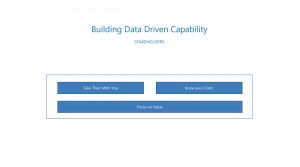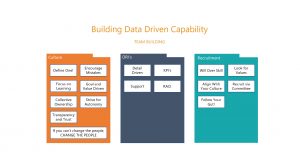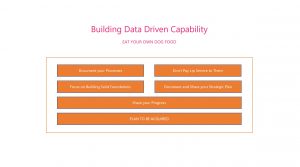We recently attended the Northern Data Forum where the big issue being discussed was what it takes to build an effective data team. Dave Naylor, CTO of ResearchBods and Heather Dawe, Lead Data Scientist at Hiscox UK talked about their experiences of doing just that. It was really insightful, so we thought we’d share some of key takeaways with you.
We all know what bad looks like, so don’t copy it
Data science is littered with examples of poorly constructed teams, often a result of having been set up too prematurely. Businesses want to do cool things with data but aren’t sure exactly what, which means they don’t put the tools in place to help their data teams deliver.
We’ve all seen it happen, so we should know what to avoid.
The formula for creating a team and helping them deliver
The success of any data-driven innovation relies on the ability of the business to change. Once a data strategy is in place the way to implement it is through lots of incremental tactical changes.
Embracing change is also essential to setting up a data science team.
Building teams in any area of a business has always been difficult and the usual norms and conventions have existed, long before 1965 when Bruce Tuckman put forward his forming-storming-norming-performance model for how groups form.
It’s no surprise that these phases are as relevant today as ever and are crucial for a team to grow, face up to challenges, tackle problems, find solutions, plan work and deliver results.
But while the team dynamics are the same, the data science discipline is relatively immature, and therefore has fewer constraints and norms than other more established specialisms. For example, job titles aren’t as well defined as in marketing or sales and data science has a huge breadth of talent, from the PHD superbrain to the Excel wizard. This makes it harder to set up teams as job roles can be ambiguous and the people lack customer practice. Combine this with a business unsure of the best way to integrate and make the most of their new data team, and bedding in can be tricky.
The key here is patience. Going back to Tuckman’s phases of group development, you can expect all the usual personalities to emerge, but it may take time. Only once you come through this period and a team dynamic forms will your pecking order naturally fall into place.
Always have the big picture in mind
Before creating a data team be clear about what you want to achieve – this is great advice. Building data-driven capability requires solid foundations, which is why 80% of the work is in making the data usable.
Decide where your data team fits into your business. There’s no right or wrong answer here but try and avoid creating silos. Your data team is likely to interact with many functions of your business so think where’s best for them to live.
Then consider the optimum team size. A little like Cheers, you want to go where everyone knows your name. Once a team exceeds 20 people the benefits of cross sharing start to break down and groups can form, so grow slowly.
Building a data-driven capability





Be the best leader you can be
If you’re responsible for creating and leading an effective data team, you’ll need to demonstrate the skills to match. Here are some of the traits all great leaders share:
- Always keep your keyboard skills up to scratch. From time to time, it’s good for the team – and how they view you – to see that you can walk the walk
- Keep things fresh when recruiting. Be open-minded. Realise that sector specific experience is less important than finding personalities that fit your team and share your passion. Delve a little deeper into a candidate’s skillset and experience, it might not all be listed on their CV
- Show your empathetic side. Empathy is one of the most important skills in business. This is especially true in data where you’ll need to help your team understand the business/customer needs
- Polish your communication skills. Data innovation is complex and multi-faceted so it’s crucial you can help your team understand the big picture, where they fit in and how knowledge can be best shared
- Bring your team together. Remote working is great, but nothing beats everyone being in the same place to learn, inspire and challenge each other – a little friendly competition is good
- Always look ahead to what’s next. Every ‘magic sauce’ has a shelf life so put aside at least 20% of your time for learning, developing and innovating
- Create and share a defined career structure. Not every member of your team is driven by the same things. Take time to understand what gets them up in the morning and lay out the opportunities that exist for them
- Embrace work-life balance. Problems can arise at any time and solving them often happens outside office hours. Encourage flexibility to reduce the risk of burning your team out
- Perhaps most important of all, have fun!

